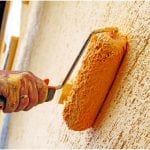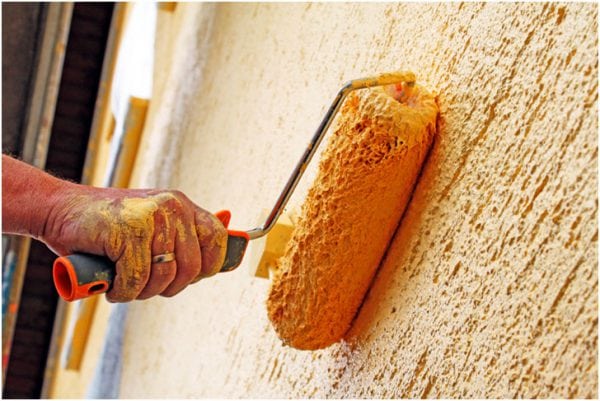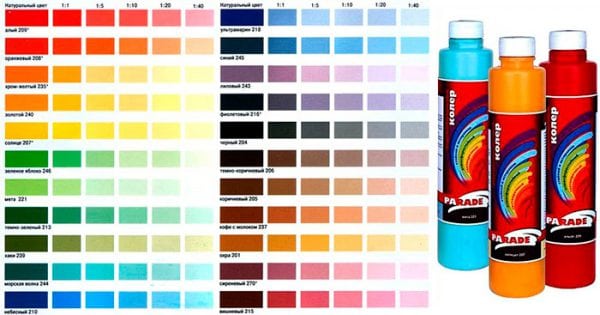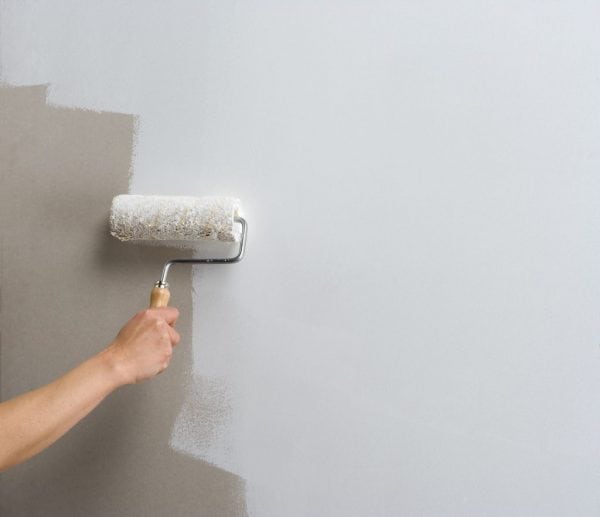In order to implement and implement any, even the most incredible repair ideas, there is a huge range of different finishing works, one of which is painting decorative plaster.
- General information
- Briefly about why painting plaster
- Paint selection
- Painting process
- Self painting


General information
The final stage of surface finishing, which is already plastered, is painting. The final result and the appearance of the surface will depend on this process. Decorative plaster itself is an unusual and at the same time practical material with which walls are finished. Using it, you can bring to life unique design projects that will give you the opportunity to be proud of your apartment. As a result, your walls, ceilings and other surfaces will sparkle with completely new colors.
to contents ↑Briefly about why painting plaster
Some people often wonder about why paint this type of plaster, if its appearance does not cause any complaints. There are several main reasons for this work:
-
this kind of finish makes it possible to create a unique design of any surfaces through the use of the entire existing color palette;
-
paint protects the wall from various external influences;
-
painting is a finishing work that requires minimal costs;
-
the facade of the building painted in light tones protects it from overheating, thereby ensuring a comfortable indoor temperature.
Paint selection
For walls decorated with decorative plaster, interior paints are used or designed to work with the facade of the building. Most often, they are available in a water-based or organic solvent.
The choice of color of the purchased paint depends solely on your desire and imagination. If you could not find the necessary shade, you can combine two or more pigments, getting the right colors with a beautiful effect.

Before buying this or that paint, you need to determine its volume. To do this, first of all, you need to measure the surface, which will be prone to painting. For example, if all walls are painted, then when measuring it is worth subtracting the dimensions of the door and window openings. Better for the so-called safety net, experts advise you to purchase another 10% of the additional volume of paint that may be needed in unforeseen situations, leading to an increase in its consumption. Additionally, in addition to the dye itself, you need to purchase and prepare a set of tools, such as:
-
roller;
-
capacity for paint (tray);
-
two brushes, wide and narrow;
-
embossed mitt;
-
special tape for sealing borders and joints (painting);
-
a film or other material for covering furniture and other items.
Painting process
Having figured out the choice of the necessary color and amount of paint, you can proceed to the staining technology itself.
The first step in the process of painting the plaster is the preparation of the walls. Dry surface must be treated with a primer mixture. The selection of a primer should be carried out based on the particular conditions in the room. These works must be carried out strictly according to the instructions specified by the manufacturer.

At a time when the primer will dry, you should proceed to the next step - preparing this type of plaster, which is also carried out according to the manufacturer's instructions. Currently, two or more colors are often used in plaster painting. This is necessary to emphasize the texture and relief stains on the surface. Using this method, remember that to apply a second coat of paint, wait until the previous one is completely dry. Finishing specialists resort to using two painting methods:
-
Washout.
-
Dry brush.
In the first case, the wash gives a brighter color and clear visibility of the depressions and the entire surface topography. And work with a dry brush allows you to emphasize all the artificial bumps. In both cases, the background color must be applied in advance and in several layers, and it should be noted that the effect of the two methods does not differ much from each other. Also, experts recommend monitoring the thickness of the applied paint layer, because taking an excessive amount of it, you can thereby hide the entire relief.
The final step in painting is the application of a protective coating. For him, special wax or professional varnish is most often used. By applying one of these products, the color of the walls will become even brighter. Such a protective coating is also applied in several layers, allowing each of them to dry.
If you want to make the wall decor even more interesting in the paint, which will be applied with the last layer, various pigments are added, for example, mother of pearl or sparkles.
to contents ↑
Self painting
Many people think about how to paint the plaster on their own, with their own hands, so as not to resort to the services of expensive specialists. The answer to this question is simple, because having the necessary tools and knowledge of the painting technology in the arsenal, you can do this job no worse than a high-class repair team.
Having carefully studied the phased work with plaster paint, having acquired tools, you can realize all your ideas and fantasies about decorating walls and ceilings.



